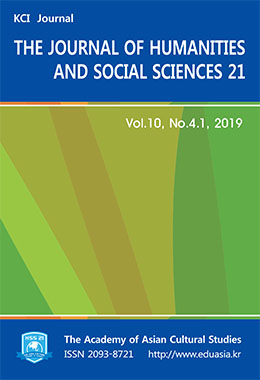『황제내경』의 운기학설(運氣學說)과 명리학(命理學)은 모두 음양오행과 천간지지를 활용하여 자연의 질서와 그에 상응하는 인사(人事) 관계를 해명하려는 점에서 공통된다. 본 논문의 목적은 『황제내경』의 오운육기(五運六氣)가 명리학에서 천간합(天干合)과 지지충(地支沖)으로 적용되는 관계를 구체적으로 살펴보는 것이다. 오운(五運)은 십간(十干)이 상합(相合)관계로 결합되어 화기(化氣)가 목운·화운·토운·금운·수운으로 변화하고, 육기(六氣)는 십이지(十二支)에서 상충(相衝)의 기가 삼음삼양(三陰三陽)으로 변화하여 매년 각 계절의 기후변화를 가져오는 것을 말한다. 오운은 갑기합(甲己合) 등 다섯 가지 천간합으로 명리학에서 적용되고, 육기는 자오충(子午沖) 등 여섯 가지 지지충으로 명리학에서 적용되고 있다. 명리학의 음양오행론에 운기학설의 화오행(化五行)론을 더하여 사주명리를 보다 폭넓게 이해할 수 있도록 꾸준한 연구가 필요하다.
Both Ungi theory (運氣學說) of Yellow Emperor’s Inner Canon (⿈帝內經) and Myeongli science have something in common in that they prove the relation between the order of nature and its corresponding personnel matter using Yinyang Ohaeng and Cheongan Jiji. The purpose of this study is to research specifically the process that Ounyukgi (五運六氣) of Yellow Emperor’s Inner Canon is applied to Cheonganhap (天⼲合) and Jijichung (地支沖) of Myeongli science. Oun (五運) means that Hwagi (化氣) is converted into Mokun/Hwaun/Toun/Geumun/Suun as Sipgan (⼗⼲) is combined into Sanghap (相合) relation, and Yukgi (六氣) means the spirit of Sangchung (相衝) is converted into Sameumsamyang (三陰三陽) in Sibiji (⼗⼆支) and brings about the change of seasons. Oun is applied in Myeongli science as five types of Cheonganhap including Gapgihap (甲⼰合), and Yukgi is applied in Myeongli science as six types of Jijichung such as Jaochung (⼦午沖). It is necessary to research continuously for broader understanding of Saju-myeongii by adding Hwaohaeng (化五⾏) theory of Ungi theory (運氣學說) to Yinyang Ohaeng theory of Myeongli science.




